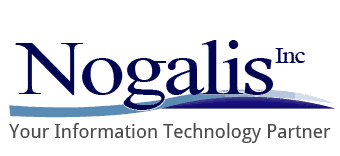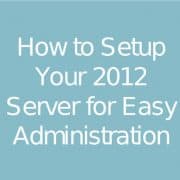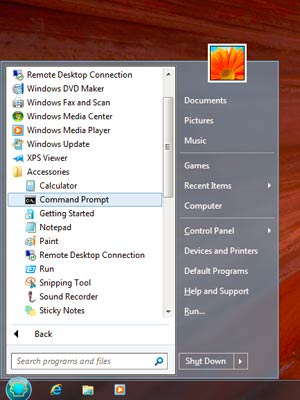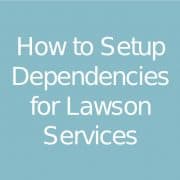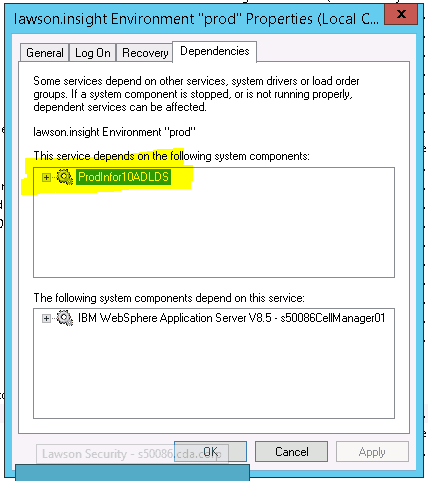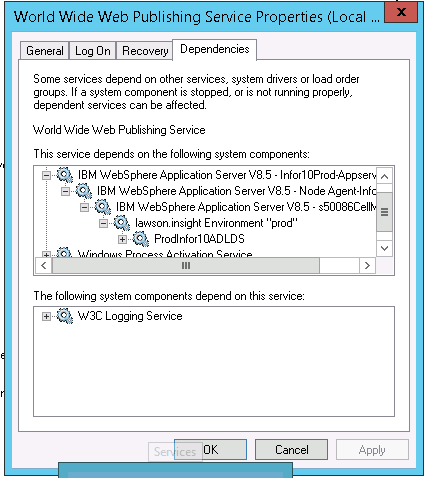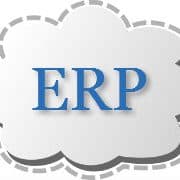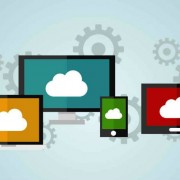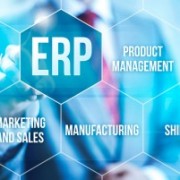- Display “Hidden items” on your C: Drive – Open File Explorer and browse to your C: Drive. On the View tab, check the “Hidden items” checkbox.
- Add a New Toolbar on your Taskbar. – Right-click on a blank area of your Taskbar and select Toolbars > New Toolbars.
- Browse to the Start Menu\Programs folder. – In the New Toolbar dialog box, browse to the “C:\Program Data\Microsoft\Windows\Start Menu\Programs” folder.
- Click the “Select Folder” button. – Click the “Select Folder” button to add the new Toolbar to your Taskbar.
After dust from the upgrade settles, it’s usually time to automate any and everything that can be automated. When it comes to Lawson (LSF) related services though things can get a big tricky.
There’s a precise order bringing up the services on windows and one way to ensure this happens correctly is to setup service dependencies on your windows applications server.
Let’s first review what depends on what and why.
The services that need to come up are in order:
- ADLDS
- Lawson Environment
- IBM Webshphere Cell Manager (Optional)
- IBM Websphere Node Agent
- IBM Websphere Application Server
- Web server (IIS)
Obviously, since all the authentication work happens through ADLDS, it makes sense that it would be the services to come up first. And since ADLDS has it’s own set of dependencies, we don’t need to create new ones there.
Next we setup a dependencies for the Lawson Environment Service to depend on ADLDS.
To do this, bring up the services window (Start-> Run-> services.msc).
Right click on your ADLDS service and note the service name.
Right Click on your Lawson Environment Service and note the service name.
Now bring up a cmd prompt as administrator and type in the following command:
sc config [service name] depend= <Dependencies(separated by / (forward slash))>
Note: There is a space after the equals sign, and there is not one before it.
Warning: depend= parameter will overwrite existing dependencies list, not append. So for example, if ServiceA already depends on ServiceB and ServiceC, if you run depend= ServiceD, ServiceA will now depend only on ServiceD.
Example:
sc config laserv-prod depend= ADAM_ProdInfor10ADLDS
In the above example, my Lawson environment service is called “laserv-prod” and my ADLDS service is called: “ADAM_ProdInfor10ADLDS”.
Once you hit enter, a message should appear that says: “[SC] ChangeServiceConfig SUCCESS”
You have now setup a dependency for the Lawson Environment service to depend on ADLDS. You can confirm this by checking the service properties:
Now you can continue with the rest of the services and setup dependencies as you go. Keep in mind that the Cell manager is really an optional service and you may not want it running all the time, so you can avoid that dependency if you like.
Next, you’ll want to change all the services named above to be automatic. We usually don’t setup any recovery options as they can lead to some unintended results.
In the end, your Web Server’s dependencies should look similar to this:
Choosing the right Enterprise Resource Planning (ERP) software for your ecommerce business is more than just picking the best one from a list of “popular” names. A good ERP can painlessly streamline your business processes, helping you operate more efficiently and effectively. Here are a few things to consider when doing ERP research:
- Consider Your Unique Needs
- Ensure Shopping Cart Compatibility
- Efficienct Customer Service
- Real Time Transaction Data
- Flexibility
- Scalability
- Included Training and Support
Modern cloud-based ERP is a good solution for any business. Searching for the right ERP solution for your business needs can cost you a lot of time and money, though the return is more than favorable.
Technology is quickly changing the face of healthcare. Electronic health records (EHRs) are readily available and accessible to both the doctor and patient. Additionally, 3-D printed biologies are used for testing and potentially transplantation are very exciting technological advances. And with mobile technology, medical wearables, and various health applications, our health is constantly in our hands and we have the power to change our lifestyles to a more healthy regiment. Investors should keep an eye on how technology is transforming healthcare, since it is likely to provide terrific long-term investments.
A recent blog post from enterprise app pros at Panaya surveyed the ease of cloud Enterprise Resource Planning (ERP) solutions and how likely businesses are to move to the cloud. It focused on three categories: cloud integration, security, and return on investment (ROI). Favorable to the cloud, over half of respondents support full cloud integration, with measurable return on investments in terms of agility and cost savings. On the other side of the spectrum, some still have yet to see any reliability or favorable returns to the cloud. Cloud ERP could possibly make ERP solutions easier to use, more reliable, and a worthy investment.
Enterprise resource planning (ERP) software addresses many issues, automating and unifying critical business processes across an organization, making business data available in real-time. If your business isn’t utilizing it now, you greatly want to consider it. Below are five signs it’s time for your business to implement ERP software:
- Information System Neither Automates Nor Integrates
- Lack of Real-Time Visibility Into Business Performance
- Rising Production Costs
- Insufficient Efficiency and Transparency
- Less-Than-Ideal Competitive Position
It’s time to ditch manual entry tasks and embrace the impact that automation will have on your business. Your customers and your bottom line will thank you.
Artificial Intelligence (A.I.) system IBM Watson will deliver a new concierge experience at Hilton hotels. A robot prototype, Connie (as a nod to Conrad Hilton, the hotel chain’s founder), will utilize knowledge from Watson and WayBlazer (the world’s first cognitive travel recommendation engine) to inform guests of local tourist attractions, hotel amenities, and popular recommendations. Like any other A.I. system, the more Connie interacts with people, the more it learns and the better it will adapt to guests’ needs. Information gained from customer interaction will positively affect the workplace by improving professional productivity, and allow companies to utilize the information gained from these cognitive systems to better understand their consumers and industry.
According to the U.S. Department of Commerce, e-commerce sales improved 15.1% in the third quarter of 2015. Though e-commerce has been growing, brick-and-mortar stores are still prominent. These five digital technologies are are making an effort to bring technology in store:
- Interactive fitting rooms for shoppers to request immediate assistance.
- Beacons for retailers to reach customers on smart devices while they are in store.
- Interactive window displays to draw customers into the store.
- Mobile devices for associates to keep current with promotions and inventory.
- Heat mapping technology for retailers to better understand shopper movement in the store.
Brick-and-mortar stores have only recently begun implementing these new technologies, though it’s looking to be a growing trend in the retail technology sector.
The U.S. Department of Education recently released the 2016 National Education Technology Plan (NETP). With mobile devices and high-speed Internet access serving as platforms for numerous advanced education technologies, NETP pushes education technology standards forward. Education standards include two components: a specific education competency and a grade level. They define what students should learn and when they should learn it. Technology creates a platform for the development of new tools and its standards benefit in the education sector, simplifying unnecessarily complex features. This could mean developing specific text-to-speech tools that would function similarly across all education software, making learning simpler and improves the experience for students and teachers as well.
Egbert Taylor Group, the world’s largest manufacturer of four-wheeled metal bins, recently deployed Infor CloudSuite Industrial (SyteLine). The cloud-based Enterprise Resource Planning (ERP) application is expected to help improve decision-making, drive growth and boost customer service by improving the sales order process and enhancing visibility into the availability of new products, stock and production capacity. Additionally, the cloud would capitalize on lower upfront costs, reduce risk and ensure that the business always has access to the latest version of Infor CloudSuite Industrial. Phil Lewis, VP solution consulting for Europe Infor, says “By putting the technology behind these processes into the cloud, they can remain agile and incrementally expand the benefits of Infor CloudSuite Industrial throughout the business as it grows, without disruption.”
